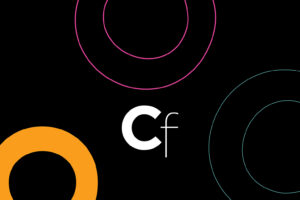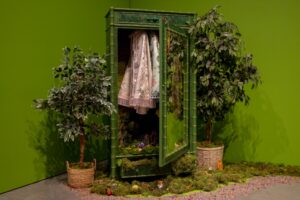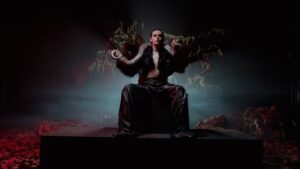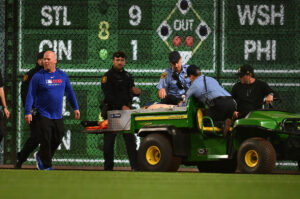An Artist’s Alluring Paintings About Consumption and Waste
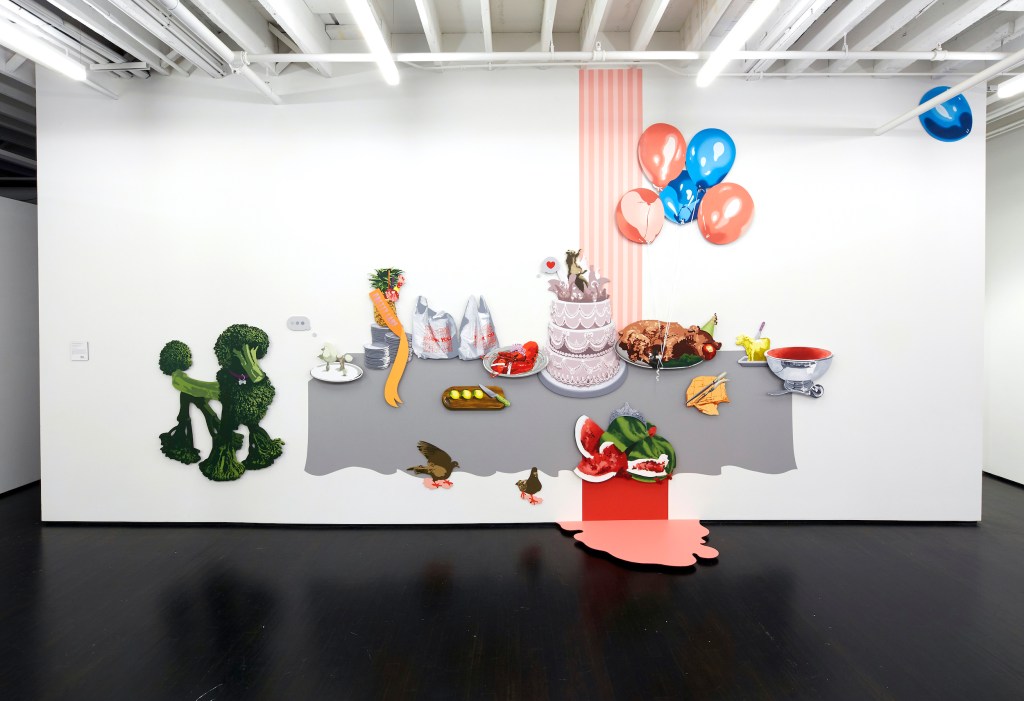

LOUISVILLE, Kentucky — I first saw Lori Larusso’s paintings in 2004, when she was a graduate student in the MFA program at the Maryland Institute College of Art (MICA) and I was finishing my last semester of teaching there. Before I left, I did something unprecedented for myself: I bought two of her paintings. One portrayed a melting chocolate ice cream cone with a childlike face, placed upside-down on a dish, and the other was of two frosted coconut cakes set against a creamy white ground. What made them more than strong paintings by a talented grad student was that Larusso had seamlessly merged lush, flat, unblended areas of acrylic paint with her interest in consumption, waste, gratification, and leisure, resulting in graphically precise depictions of anthropomorphic desserts.
After leaving MICA, I stayed in touch with Larusso, and followed her on Facebook and Instagram, but I did not see her work again in person until 2023, when I visited Louisville, where she had relocated to teach. She had made a name for herself in the city, and while I was in town I saw her wall installation, “A Pastiche of Good Intentions and Other Parties”(2019), on view in the lobby of KMAC Contemporary Art Museum. While food has been a through line in her art over the past two decades, it is clear that she has explored different possibilities, as she has become more adept as a painter.
When I returned to Louisville this past February for the Louisville Conference on Literature and Culture, I stayed an extra day to stop at Larusso’s studio. Over the course of the morning, I saw three bodies of work, two completed and one in progress for her first museum exhibition, A Paradox of Plenty, opening at the Arkansas Museum of Fine Arts on August 26. Contemplating Larusso’s mastery of color relationships in tandem with her long preoccupation with consumption and waste, I am reminded of how much interesting art I have seen in different cities I have visited as a poet, and how little of it is shown on both coasts.

“Bourbon Rocks on Red” (2025) typifies Larusso’s formal facility with color, which comprises one strain of her art. Set against a red ground, and casting a maroon shadow, the cylindrical glass is composed of interlocking red, pink, maroon, brown, and tan shapes, overlaid with small white accents. “Bourbon Rocks on Red” is both a tactile and a perceptual surface that sits comfortably on the dividing line between abstraction and representation without favoring either side. This and other paintings in this series reminded me of the line in John Ashbery’s great poem, “Soonest Mended”: “a kind of fence-sitting/Raised to the level of an esthetic ideal.”
For her series Ladyface Vase (1 – 14) (2024), Larusso depicts flowers in painted ceramic vases originally made by the California ceramicist and artist Betty Lou Nichols, who began creating head vases of movie actresses at her kitchen table in the late 1940s. These ceramic caricatures became so popular that at one point she had two-dozen employees, and they spawned many knock-offs before the fad faded in the late 1960s.
Nichols followed a formula: Each face had large black eyelashes hiding downcast eyes, and a heavily lipsticked mouth. In Larusso’s painings, the bouquets rising from their elaborate hairdos or behatted heads are sometimes blooming and other times wilting or dried up. Representing a Euro-American ideal of beauty and glamour, the faces were based on well-known Hollywood actresses such as Rita Hayworth, Ava Gardner, Jayne Mansfield, and Marilyn Monroe.

Formally, as with the glasses of bourbon, Larusso’s flowers are an exploration of color relationships. But the head vase paintings also convey her interest in the power dynamics between women and men, the male gaze, and how society’s notion of refinement can make a consumer want to possess an object modeled on a movie actress, someone who is essentially a fantasy figure.
Larusso is a socially and politically conscious artist but she never announces her intentions. Her conceptualization of particular themes — from wild animals’ adaption to human environments where food is widely available to the ways we disguise and decorate food — can be funny and unsettling, as in arranging broccoli stalks to make an oversized coiffed poodle, which we see in the installation “A Pastiche of Good Intentions and Other Parties.”
What has changed over the past 20 years is Larusso’s deepening interest in how consumer society processes food and images so that they become surrogates and substitutes. In rigorous and urgent pursuit of this preoccupation, she depicts an increasingly askew consumer-driven world riddled with false promises.

In “Midden” (2025), Larusso depicts a dead deer whose open stomach reveals a pile of trash. Taking a deadpan approach, her unlikely, eye-catching, grotesque juxtaposition is both comical and grim. Close scrutiny of the trash reveals a computer keyboard, plastic fork, plastic coffee cup lid, plastic-wrapped lollipop, Kleenex box, waffle, tube of lipstick, and sneaker with bubble gum stretched on its sole. Because some of these things are more readable than others, the eye must constantly refocus. Larusso has inverted the trope of humankind consuming nature in the deer’s unwitting consumption of human-made junk.
Similarly, “Binge and Purge” (2025) portrays a mound of items piled up beneath a vertically oriented shopping cart. At the top of the triangular mound is a teddy bear split open and spilling out keys, a package of condoms, a screwdriver, and money. The other things include a carved pumpkin, a take-out coffee cup, a coffee pot, work gloves, and a pantyhose container. Are these goods that someone just bought or garbage? With her attention to packaging, Larusso suggests that in the cycle of consumption and waste that is central to every civilization, capitalism has inverted the relationship by purging waste that is more indestructible than what it binges.

